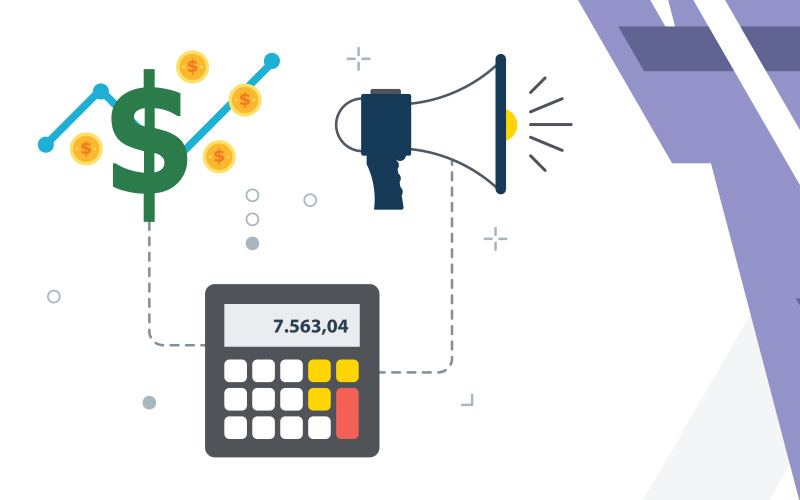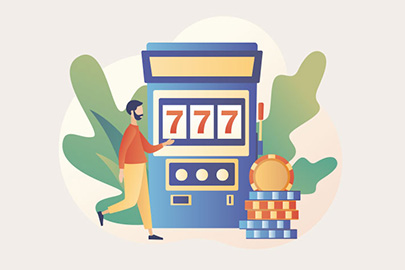Casino Mechanics & Revenue
Even though the gambling business requires several stages that are similar to all other spheres (proper certification, high-quality software, and hardware, efficient marketing, etc.), it is still a peculiar industry with its unique mechanics. Since the sphere is aimed at providing entertaining content to clients in exchange for the payment, there is a lot to discuss on the economic aspect.
The experts from 2WinPower want to acquaint you with the key elements of the casino gaming mechanics as well as the revenue peculiarities. Both new and experienced operators may find this information knowledgeable due to the detailed explanation that we are eager to deliver together with the competent specialists.
Gaming Economy

The first aspect that should be mentioned is the Return to Player. It is a percentage of Wager (bet amount) that a game will payout to players over time. In general, there are two types of RTP:
- Theoretical. It reflects the way the games are designed. For example, if you flip a coin, you are supposed to get 50% heads or 50% tails, considering you toss an infinite amount of times.
- Genuine. This percentage is based on real results within a specific timeframe. With the same example of a coin, you will not be able to toss it illimitably. After 1,000 times, you will see that you are somewhere near 50%.
The same situation is with slot games. Some players can spin 10 times and win in 8 instances. However, over a certain period, the theoretical RTP laws will be applied, and you know that you are going to be in a very specific percentage range,
— indicates the CEO of American iGaming Solutions.
While different types of games have different RTP percentages, in general, most casino games will return between 90% and 99.5% to a player. The amount returned to players is called Winnings or Total Win.
RTP = Total Win / Total Wagers
Some slot games can even have a lower percentage, while Blackjack, for example, has 99.5% and higher. That is usually what a general range is supposed to be.
The gaming operator (aka the House) keeps the difference between the Wagers and the Winnings. This amount is called the Hold.
Hold = Total Wagers – Total Win
When expressed as a percentage of Wagers, the Hold is referred to as the House Edge or Margin.
House Edge = Hold / Total Wagers * 100
As a result, in order to understand whether your gambling facility is doing everything right, you may just add the House Edge and the Return to Player percentage and receive 100%.
RTP + House Edge = 1 (100%)
Revenue Calculations

Besides the three pieces that we have discussed (RTP, Hold, House Edge), there are a few other notions that are similarly important during the casino operation. The way revenue is calculated can change from business to business, depending on the types and number of verticals offered. Individual platforms can also formulate revenue differently, but many are customizable.
Regulatory bodies may formulate taxable revenue in different ways than your platform or content providers calculate the amounts they charge fees on.
The US online gaming and marketing consultant expert points out:
The good news is that all of this data is digital and is queried to calculate exactly what we need. Most platforms will be able to show you from the tax perspective if you need to pay specific fees or deductions.
Gross Gaming Revenue
GGR is not a measure of profitability but a measure of sales. We use it to understand what our operation is generating before expenses such as game supplier fees and taxes. At its most basic form, we simply subtract the winning returned to players from the amount wagered.
GGR = Player Wagers – Player Winnings
Meanwhile, we tend to apply the same terms to use different notions. The gaming KPI is a clear example of that. Before getting into its gambling aspect, let us discuss it as a matter of communication.
Imagine, you do business relations with your content provider, with the jurisdiction regulator, with your marketers. All these need to be governed by the set of KPIs, in other words, by a common language.
The CEO of American iGaming Solutions marks:
The main point is to understand that even though different companies, entrepreneurs can use the same terminology, they might have different meanings. Therefore, you, as an operator, must be able to understand the KPI in all those environments. And the Gross Gaming Revenue is one of the most important terms for you.
As we have mentioned, GGR is not a measure of profitability. It is of utmost importance to pay enough attention to this aspect as it is the most prominent feature that you are going to use for creating commercial and financial terms with your providers and regulators.
For the companies that had used to set up everything by themselves, it was a closed ecosystem. They could invent what KPIs they wanted since there was no obligation to report to anyone. Therefore, GGR wasn’t as much popular at those times. Nowadays, the more the industry progresses, the more operators establish different relationships with other organizations, and Gross Gaming Revenue becomes the key method of communication.

In general, we can perceive it in a few different ways:
- Theoretical GGR — it is comprised of all wagers minus all wins and is the simplest and most general form of calculation.
- Regulator’s GGR — it is a formula created by regulators in specific jurisdictions to define and standardize reporting and taxation.
- Supplier’s GGR — it is a formula created and defined by platform and content providers to govern commercial relationships with operators.
In all of those cases, you may see that GGR is a percentage that you need to pay. However, the reality will be different as it is based on a different formula, and you need to ensure you clearly understand the distinctions. Let us give a more in-depth explanation of possible GGR representations.
Bonus Approach
Imagine a regulator says you need to market to people, and they know that you do it with bonuses. Therefore, they are going to account the Real Hold and allow you to deduct bonuses that were achieved. In this case, we have:
GGR = Real Hold – Bonus Achieved
So, if you have to pay 20% of GGR as your taxes, it is going to be based on the outcome of the Real Wagers minus Real Win with the deduction of any bonuses, which have been converted since we treat it as the marketing cost in this specific example.
Accounting Approach
Today, most platforms are provided with reporting that allows you to construct any of the definitions above. However, some older venues don’t have similar operating systems. For example, people in unregulated markets come up with their own ways of promoting online gaming but don’t have proper reporting tools. In order to trace the GGR, they resort to the accounting approach.
GGR = Starting Balance + Deposits – Withdrawals – Ending Balance
An operator will look at the starting balance (the real money that is on the players’ accounts for the chosen period), add the new finances that were injected in during the specific time, deduct all the money that the players withdrew, and subtract the Ending Balance.
Net Gaming Revenue

It is basically a KPI, which is meant to reflect the operator’s revenue after a deduction of expenses. NGR is primarily used for internal reporting, and as such, may vary significantly by an organization or a platform.
As its core, the NGR calculation is heavily dependent on the formula used for GGR calculation that also subtracts expenses:
Total Wagers – Total Winnings – Sum of Deductions
Deductions would typically relate to cost, which has a direct impact on players’ gaming activity, primarily bonuses and jackpot contribution.
The CEO of American iGaming Solutions also hints:
You should remember that if you use NGR to establish commercial relationships, it is essentially just a name, depending on the formula that you attach to it.
Application of Formulas on Real-Life Examples
Let us try to review a few examples of real-life situations. It will help you better understand the formulas and their use to the real numbers.
The Total Bet on a specific slot title from all players in a week was $125,200. During this period, the Total Win distributed for this game was $110,000. With this in mind, the Hold on this game for the week is as following:
$125,200 – $110,000 = $15,200
It is also possible to calculate the Return to Player on this game for the week:
110,000 / 125,200 = 0.878 * 100 ≈ 88%
During a month of play, a casino has generated $523,456 in Hold. This revenue resulted from Total Wagers of $11,200,000. Let us see the casino’s House Edge for this month:
523,456 / 11,200,000 = 0.046 * 100 ≈ 4.6%
The casino has generated a Real Hold of $423,874 in the previous month of a total Real Wagered amount of $15,980,000. During the month, $27,000 in bonuses were converted to real money. Our casino calculates GGR as Real Hold – Bonus Achieved. Our regulator requires us to pay 10% of GGR in taxes. So, the GGR for the previous month will be:
$423,874 – $27,000 = $396,874
And the casino’s Real Hold will equal:
$423,874 / $15,980,000 = 0.026 * 100 ≈ 2.7%
And also, the Gross Revenue after taxes for the previous month is:
$396,874 – $39,687.40 = $357,186.60
A casino has generated a Hold of $4,200,000 in the previous month of players that deposited $7,000,000. There was a total Wagered Amount of $92,500,000. During the month, $300,000 in bonuses were converted to real money. The casino calculates GGR as Hold – Bonus Achieved, however, the platform fees are 3% of Hold, and the average content fee is 14% off Hold with no deductions for bonuses.
The casino pays a 5% fee of all deposits to our payment processor. Our market also requires us to pay 12% of GGR in taxes. The casino calculates Net Gaming Profit as GGR – Taxes – Platform Fee – Content Fee – Payment Processing. So, what is the GGR for the previous month? Let us see:
$4,200,000 - $300,000 = $3,900,000
And what is the Net Gaming Profit for the previous month? Here, we need to make a few calculations, so it is essential to be attentive:
Taxes = GGR * 12% = $3,900,000 * 12% = $468,000
Platform Fee = Hold * 3% = $126,000
Content Fee = Hold * 14% = $4,200,000 *14% = $588,000
Payment Fees = $7,000,000 * 5% = $350,000
NGP = $3,900,000 – $468,000 – $126,000 – $350,000 – $588,000 = $2,368,000
Expert Assistance from 2WinPower

Regardless of the detailed explanation, the numbers can still be a bit confusing even for experienced entrepreneurs.
For efficient business running, every self-respected casino operator should be aware of the following economic aspects:
- calculate the Return to Player, Hold, House Edge numbers;
- measure the efficient Gross Gaming Revenue;
- work out the KPI and Net Gaming Revenue for the establishment.
If you have any questions regarding the formulas or just want to find a reliable guide to provide you with the detailed rundown personally, feel free to resort to the specialists from 2WinPower. Just contact our responsive support team that will eagerly deal with any queries you might have.
Contacts:
- Skype: twowinpower
- Telegram: @Win2Power
- e-mail: info@2wpower.com
- the feedback form.
- e-mail: info@2wpower.com
- Telegram: @Win2Power
Please be careful! We have noticed that scammers are using our contact details to deceive customers.
For security reasons, please use only the contact information provided on the page https://2wpower.com/en/feedback
Our company is not responsible for the actions of fraudsters.








































 DEMO
DEMO 



